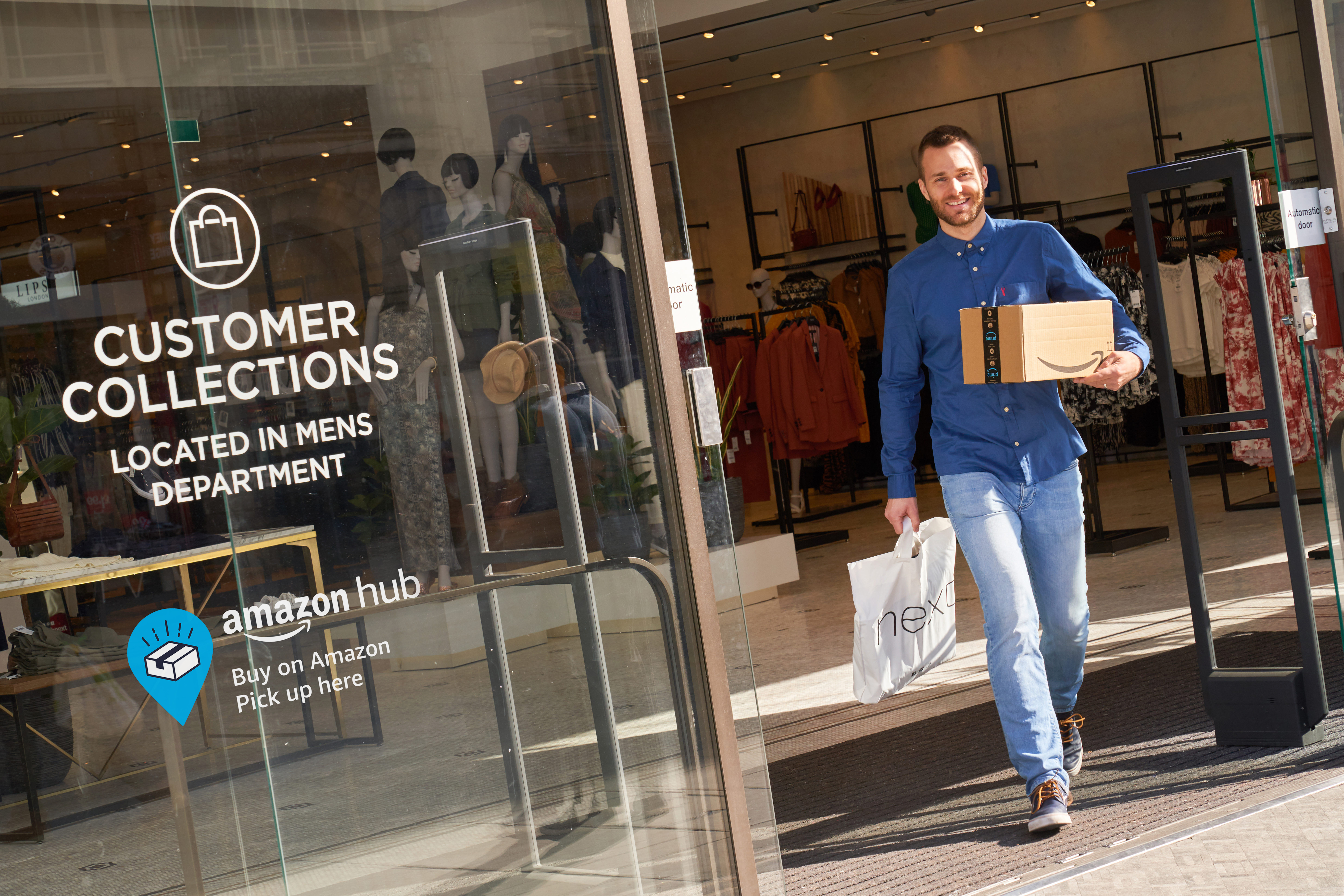Is this the future of the high street?
According to Next’s CEO Lord Simon Wolfson, a partnership with Amazon is one of the ways they can stay “relevant” to shoppers.
And I have to agree. In the UK, Amazon is the 5th largest retailer. Nearly 20% of retail sales now take place online and, although we don’t have official data, I would estimate that Amazon accounts for 40% of that spend.
So how do you evolve?
How do you repurpose your physical space? I’ve said time and again that stores need to become: 1) frictionless; 2) experiential; and 3) a hub for fulfilment. Ticking that last box, hundreds of Next stores will now allow shoppers to collect their Amazon parcels instore through a new program called Amazon Counter.
It’s not dissimilar to Amazon’s US partnership with Kohls, which has been wildly successful and is now being rolled out across the entire store estate. Kohl’s stores however also handle Amazon returns and I imagine this will come in time as they look to address what is very much the Achilles heel of e-commerce.
Meanwhile, in France, Casino recently announced plans to expand its partnership with Amazon by adding 1,000 collection lockers to its supermarkets. Next isn’t the only one willing to dance with the devil.

Co-opetition: it’s only the beginning
Co-opetition was a key theme throughout our book. In Chapter 2: Why Amazon is Not Your Average Retailer, we wrote:
“In the future, more retailers will run on Amazon’s rails. Retailers themselves are increasingly content to overlook the huge competitive threat posed by Amazon to take advantage of their physical and digital infrastructure. Some may consider it playing with fire – certainly retailers like Toys R Us, Borders and Circuit City would. They were among Amazon’s very first ‘frenemies’ in the early noughties when they outsourced their e-commerce business to the giant – all three have since gone bankrupt. But we believe more retailers will cozy up to Amazon if it helps them to achieve greater reach (marketplace), drive traffic to stores (Amazon pop-ups, click & collect, instore returns) or improve the customer experience (same-day delivery, voice-activated shopping). The unique dual role of competitor and service provider is becoming more apparent by the day. ‘Co-opetition’ is a key theme for the future.” [Berg & Knights. Amazon: How the World’s Most Relentless Retailer will Continue to Revolutionize Commerce, p23, Kogan Page.]
Later in our book, Miya and I predicted that Amazon would team up with a retailer like M&S or Debenhams; Next is actually a far better fit so consider this a coup for Amazon.
More than half of Next’s sales now take place online and a good chunk of those are collected instore. They recognized early on the importance of repurposing their stores to cater to today’s ‘on-my-terms shopper’.
Despite falling like-for-likes, Next is yet to embark on a radical store closure plan. They understand that the store’s role is no longer purely about selling and that having a strong physical presence is an incredibly valuable way to engage with shoppers, let them try stuff on, collect and return orders (as evidenced today) and also offer an experience they can’t get online. I’d argue prosecco bars and hair salons may be a step too far (Debenhams is closing its instore gyms, anyone surprised?) but certainly coffee shops and collaboration with other retailers like HEMA, Paperchase, Mamas + Papas is the way forward for a high street retailer like Next.
Amazon is not a credible fashion destination
Next’s willingness to partner with Amazon is also a sign that they don’t see them as a threat, despite Amazon building up its own arsenal of fashion brands. Never underestimate Amazon, of course, and I certainly don’t doubt that they can sell ‘clothes’ but I just can’t see them cracking ‘fashion’. But more on that another day.

